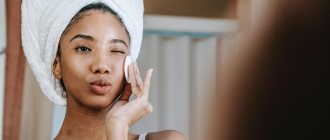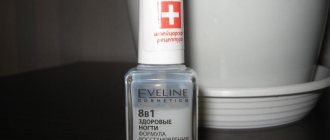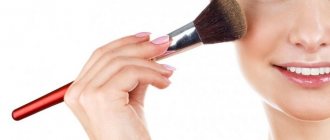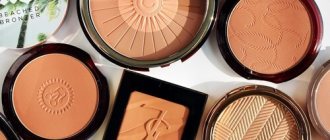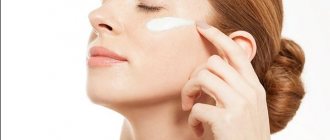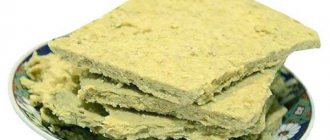Learning to read the composition
According to labeling rules, the packaging of any cosmetic product must fully indicate the composition (in Russian or English), and all components are listed in descending order. Among the first ingredients is almost always water, since it makes up about 70-80% of the base, and at the end of the list we will see preservatives and flavorings. This, as they say, is the best case scenario. In not very high-quality creams, the active ingredients - vitamins and extracts - may be in last place. This suggests that they are contained in a minimal amount (less than 1%). So, it turns out that on average, the cream consists of 80-90% of the base - gel (less greasy) and emulsion fat, etc. 10-15% of active ingredients and 3-5% of preservatives and fragrances are added to it.
Checking the composition of cosmetics using cheat sheets
Finally, some easy-to-follow tips.
Use fewer products. Try just one type of moisturizer, for example. Instead of using body lotion, hand lotion, face cream, under eye moisturizer, etc.
And, most importantly, learn to read the ingredients in cosmetics. Due to the prevalence of cosmetics in society, it is important to be an informed and educated consumer. Know what's in your cosmetics and how it impacts you and the environment.
For beginners and those not knowledgeable in this area, it is very difficult to understand all the names of the ingredients, much less which of them are safe and which are not. We have created a unique cheat sheet for you that can be used at any time. With it, you can easily check the composition of cosmetics online by looking at the cheat sheet:
Thanks for sharing with your friends!
- 8
- 173
Surfactants (surfactants)
Surfactants are chemicals used for cleansing in shampoos and makeup removers. Surfactants wash away the protective layer from the skin and make it dry and irritated.
Types of surfactants:
- Anionic.
- Cationic.
- Ampholytic.
- Nonionic.
Most surfactants are chemicals that negatively affect the skin, but there are also natural surfactants that are not harmful to humans:
- Coconut milk.
- Palmitic acid.
Synthetic surfactants in small doses do not harm humans, but if their content in the product is exceeded, they can lead to problems with the liver, kidneys and central nervous system .
What does cosmetics consist of?
A typical care product contains from 15 to 50 ingredients. And if you consider that the average woman uses at least 9 such products per day, it turns out that more than 500 cosmetic ingredients come into contact with the skin every day.
Products that are almost always included in cosmetics: water, emulsifier, preservative, stabilizer, emollient, acidity stabilizer and perfume composition.
In the list they are listed according to the rule from higher to lower concentration: the first five ingredients are the bulk of your product, the rest are contained in a small concentration, usually no more than 5%. But even a small concentration affects the skin. For example, niacinamide also works at a concentration of 2% - it mattifies the skin and evens out its tone. Therefore, you need to pay attention to all components in the composition.
Is it true that there are dangerous ingredients in cosmetics?
It's a difficult question. On the one hand, yes, some ingredients in cosmetics are potentially dangerous. You've probably read about the dangers of parabens or formaldehyde. They are generally considered to be powerful allergens. But the truth is that the concentration that they have in the composition of the skincare product is too small to provoke an allergy and generally cause any harm.
The products you see on store shelves have passed safety checks and you can buy them without fear. There are no dangerous ingredients in cosmetics. And if it does, it means that you bought the product from an unverified seller or the product turned out to be defective with an unsafe composition. Perhaps you are simply intimidated by those who have not read new research and expert reviews. And there they write: if you use parabens correctly, there will be no harm.
Parabens
The main task of parabens is to preserve cosmetics and protect against harmful bacteria and microorganisms. These chemicals are used in all cosmetic products.
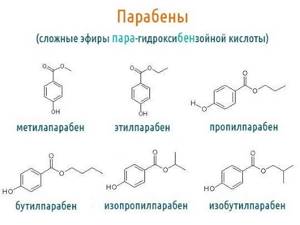
Here are some of them:
- Isopropyl.
- Isobutyl.
- Butylparaben.
- Propylparaben.
The advantage of parabens is that they are non-allergenic, but their natural substitutes can cause allergic reactions. The harm of parabens has not yet been proven; it was believed that they lead to hormonal imbalances and breast cancer, but this has not been proven.
Vitamins
Cosmetics, which can be checked by looking at the packaging, often contain not only harmful substances, but also natural ingredients or vitamins.
Many of them have beneficial effects on the skin:
- Vitamin A is most often used in anti-aging cosmetics. It can penetrate into the deep layers of the skin and nourish them. This vitamin has a stimulating effect on the cells that produce collagen and elastin, thus making the skin firmer and smoother. Skin aging processes slow down.
But cosmetics with vitamin A are not recommended for use before the age of 40 , as the effectiveness will be low. Vitamin A should not be applied to the face in its pure form. It can cause serious allergic skin reactions.

- Vitamin E is another vitamin that helps eliminate wrinkles and smooth the skin. Used in anti-aging serums, creams and emulsions. Vitamin E extends the period of existence of red blood cells in the skin, lightens age spots, and helps eliminate acne.
Vitamin E is also used in face creams due to its ability to remove excess moisture from the skin. This way it prevents puffiness and swelling.
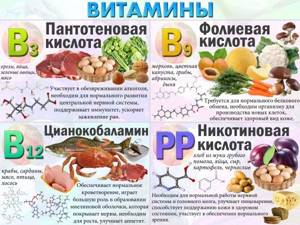
- Vitamin C – protects the skin from premature aging and the negative effects of ultraviolet radiation. It removes fine wrinkles and skin pigmentation on the face and neck, improves collagen production in cells.
- B vitamins - they all regulate metabolic processes in the dermis. They have regenerating properties, heal wounds from acne and blackheads, lighten age spots, remove skin redness and sunburn. B vitamins also enhance collagen production, moisturize the skin and are quickly absorbed.
